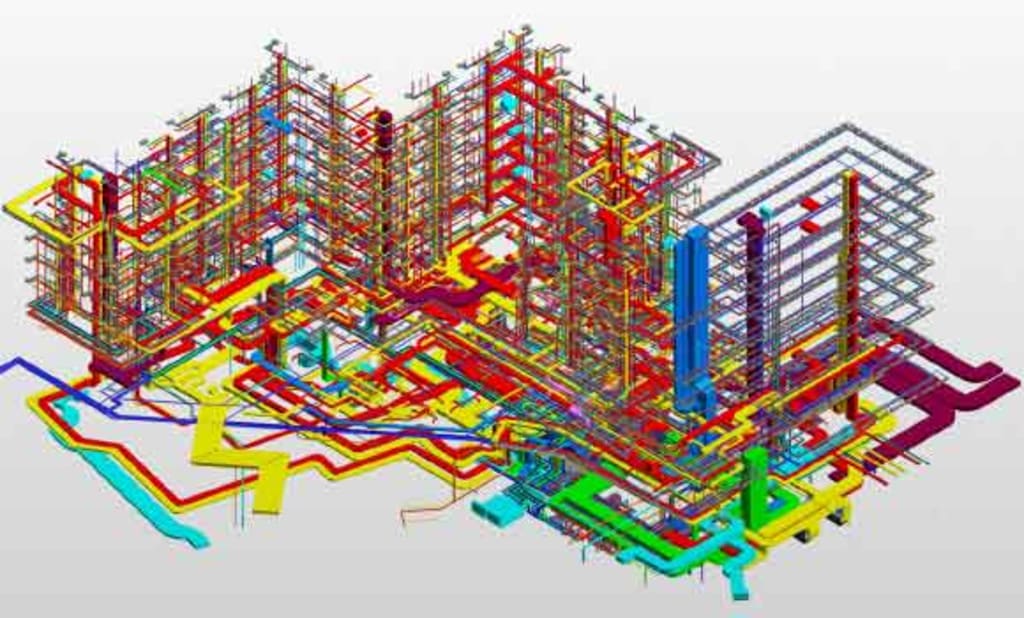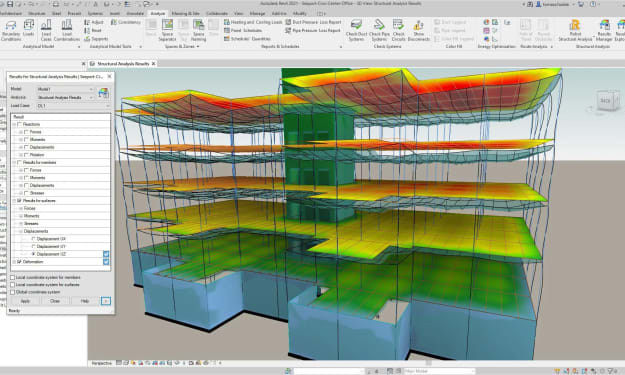How BIM Clash Detection Reduce Construction Rework & Costs?
BIM clash detection is a game changer for the construction Industry, offering substantial benefits in terms of reducing rework and costs.

In the world of construction, clash detection plays a crucial role in ensuring the smooth execution of complex projects. Building Information Modeling (BIM) clash detection has emerged as a powerful tool that aids in identifying clashes and conflicts within the construction process.
By leveraging advanced technology and 3D modeling, BIM clash detection helps minimize rework, enhance collaboration, and ultimately reduce costs.
In this article, we will explore how BIM clash detection revolutionizes the construction industry.
1. Introduction to BIM Clash Detection
BIM clash detection is a process that involves the identification and resolution of clashes and conflicts between various building components within a construction project.
It utilizes sophisticated software tools that create a virtual representation of the project, allowing for comprehensive analysis and detection of clashes before the actual construction begins.
2. The Importance of Clash Detection in Construction
Clashes and conflicts among building elements can lead to significant rework, delays, and cost overruns. Traditional clash detection methods relied heavily on manual inspections and coordination, which were time-consuming and prone to errors.
BIM clash detection, on the other hand, enables early identification of clashes, reducing the likelihood of errors and rework during the construction phase.
Also Read - BIM Implementation Strategies For Architectural Firms
3. How BIM Clash Detection Works

BIM clash detection begins with the creation of a detailed 3D model of the construction project, incorporating all relevant architectural, structural, and MEP (mechanical, electrical, plumbing) components.
Phase explained -

The BIM software then analyzes the model, checking for clashes and conflicts between different elements. These clashes are highlighted visually, allowing project stakeholders to easily identify and resolve them.
4. Benefits of BIM Clash Detection
- Minimizing Rework
One of the most significant benefits of BIM clash detection is its ability to minimize rework. By identifying clashes early in the design phase, construction teams can address them before they become costly issues during construction.
This proactive approach not only saves time and resources but also improves project efficiency and reduces the risk of errors.
- Enhancing Collaboration
BIM clash detection promotes collaboration among different project stakeholders, including architects, engineers, contractors, and subcontractors. It provides a common platform where these stakeholders can share information, coordinate efforts, and address clashes collectively.
This collaborative approach fosters better decision-making, improves communication, and ultimately leads to smoother project execution.
- Cost Reduction
Implementing BIM clash detection can significantly reduce construction costs. By eliminating clashes early in the design phase, costly rework and delays are minimized.
Moreover, the improved coordination and communication facilitated by BIM clash detection result in more accurate cost estimates, reducing the chances of budget overruns.
5. Best Practices for Implementing BIM Clash Detection
To maximize the benefits of BIM clash detection, it is essential to follow best practices during implementation. Here are some key recommendations:
- Utilizing Integrated BIM Software
Investing in high-quality BIM software that supports clash detection functionalities is crucial. Integrated software solutions allow for seamless collaboration, data exchange, and comprehensive clash analysis.
- Establishing Clear Communication Channels
Effective communication is vital for successful clash detection. Establishing clear channels of communication between project stakeholders ensures that clashes are promptly addressed and resolved.
- Conducting Regular Clash Detection Sessions
Regular clash detection sessions should be scheduled throughout the project lifecycle. This ensures that clashes are continuously identified, addressed, and documented, minimizing their impact on construction timelines and costs.
6. Challenges and Limitations of BIM Clash Detection
While BIM clash detection offers numerous advantages, it is essential to be aware of its challenges and limitations. Some common challenges include the need for skilled personnel, data interoperability issues, and the complexity of large-scale projects.
Also Read - Understanding 4D BIM Scheduling: Comprehensive Overview
7. The Future of BIM Clash Detection
As technology continues to advance, the future of BIM clash detection looks promising. Emerging technologies such as artificial intelligence and machine learning are being integrated into BIM software, further enhancing clash detection capabilities and streamlining the construction process.
Conclusion
In conclusion, BIM clash detection is a game-changer in the construction industry. By proactively identifying clashes and conflicts, construction teams can minimize rework, enhance collaboration, and reduce costs.
With the increasing adoption of BIM clash detection, the industry is poised to witness improved project outcomes, greater efficiency, and enhanced construction quality.
FAQs
Q1. Is BIM clash detection suitable for all types of construction projects?
Answer: BIM clash detection can be applied to a wide range of construction projects, regardless of their size or complexity. Its benefits extend to various sectors, including residential, commercial, industrial, and infrastructure.
Q2. Can BIM clash detection prevent clashes entirely?
Answer: While BIM clash detection significantly reduces clashes, it cannot completely eliminate them. However, by detecting clashes early, construction teams can proactively address them and minimize their impact on the project.
Q3. How does BIM clash detection improve project efficiency?
Answer: BIM clash detection enhances project efficiency by identifying clashes before construction begins. This allows for timely resolution, preventing costly rework and delays during the construction phase.
Q4. Is BIM clash detection only beneficial for large construction companies?
Answer: No, BIM clash detection offers benefits to construction projects of all sizes. It improves collaboration, reduces rework, and enhances cost-effectiveness, making it valuable for both large and small construction companies.
Q5. What are the key factors to consider when selecting BIM clash detection software?
Answer: When choosing BIM clash detection software, it is important to consider factors such as ease of use, compatibility with other software, clash detection accuracy, and the availability of support and training resources.
Further Reading
About the Creator
Matt Sharon
A professional content writer. Having years of experience in Technology, health, finance, and construction and real estate field. Writing is my passion and I love to play with words Confidently.






Comments
There are no comments for this story
Be the first to respond and start the conversation.